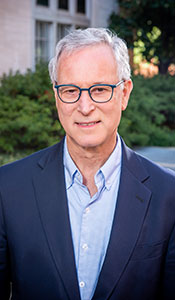Identifying Areas for Improving Patients’ Clinic Experience
A primary focus of our NF Clinic this year is conducting a careful evaluation of our internal systems to identify areas for improvement. To that end, we have begun a series of internal discussions about process improvements in the clinic with the goal of making the experience of our patients as positive as possible. While we feel that our clinic provides the highest level of care comparable to or better than specialty clinics anywhere in the world, we’re continually interested in identifying areas where we can improve the experience of our patients. Providing comprehensive care for NF patients involves multiple appointments with many specialists as well as coordination of a variety of laboratory and imaging tests. In addition, obtaining insurance preauthorizations requires significant behind-the-scenes work from our staff.
Because of this complexity of care, our ongoing focus is to provide the most streamlined and stress-free experience possible for our patients – and we know that we have to go some distance to achieve this goal. We feel that helping patients to become more engaged in their care is an important way to give them more control and enhance their overall experience. One way we’re doing this is to encourage patients to use the online UAB Patient Portal, which allows secure messaging of clinical information for pediatric and adult patients. This important tool helps to streamline care by expediting and increasing communication between patients and the clinical care team. Although we send electronic invitations to all patients for the portal, not everyone registers to use it because the invitation is sometimes not recognized or the instructions aren’t well understood. We’re focused on increasing usage of the online patient portal system by walking patients through the portal registration process while they are in clinic, as we feel all of our patients can benefit from this care management tool. Additionally, we’re attempting to minimize the number of no-show appointments in our clinic through appointment verifications and other measures. When a patient doesn’t arrive for an appointment, this represents a slot we could have offered to someone else who was hoping to be seen sooner. We welcome comments regarding additional ways we can improve our patients’ experience, and we look forward to maintaining our commitment to providing the highest level of patient-centered care.
Atypical Neurofibromas and Malignant Peripheral Nerve Sheath Tumors
Next, I’d like to address the issue of atypical neurofibromas and their potential to become malignant peripheral nerve sheath tumors (MPNST), probably the most feared complication of NF1. Occurring in about 10% of people with NF1, the malignant peripheral nerve sheath tumor can develop from a pre-existing plexiform neurofibroma. Diagnosis usually requires imaging, and in some cases use of a radioactive tracer (PET scan), and, ultimately, surgical biopsy of the tumor. Surgical resection is the most effective treatment, as these tumors are not sensitive to standard chemotherapy or radiation. The best way to prevent serious complications resulting from these tumors is to identify them as early as possible and consider surgical resection if this can be done safely.
Atypical neurofibromas, which have distinctive clinical and pathological features, may be a precursor to the development of a malignant peripheral nerve sheath tumor. They usually appear as homogenous nodules that, when palpated, have a firm consistency that is unlike plexiform neurofibromas, which are usually soft or spongy to the touch. Biopsies of atypical neurofibromas tend to show densely packed cells and may show dividing cells, whereas non-malignant neurofibromas typically are less dense. There is evidence that atypical neurofibromas may be early precursors to a malignant peripheral nerve sheath tumors, so vigilance is important, which may include biopsy or surgical resection. Whole body MRI is beginning to emerge as a method that may be helpful in identifying atypical neurofibromas, and we are exploring the utilization of whole body MRI for this purpose.
